Microbrachius dicki
Microbrachius dicki is an extinct small fish species of the Middle Devonian, classified into the antiarchs of the placoderms with the armour-like dermal plates on the head and the trunk 1). The total length of M. dicki is estimated to be 8 - 10 cm, since the armour is about 3 cm in length (measured on Figure 3 of the reference 1).
M.dicki specimens have been found in the sediments of the rivers or lakes 2), suggesting that they lived in the fresh water environments. However, it is possible that they also lived in the brackish area, since some antiarchs inhabited the marine environments.
The mouth is ventral as in Bothriolepis, suggesting that they preyed on invertebrates or fed on organic detritus in the sediments of the water bottom.
The external genital organs differ in shape between female and male (sexual dimorphism), and male has L-shaped clasper (used in copulation), therefore they used internal fertilization 1). Hypothetical mating position, that is, female and male copulated from a sideway position, somewhat resemble dancing each arms in arms, has been proposed 1).
It has been thought that the internal fertilization are evolved after the external fertilization in Gnathostomes (the jawed vertebrates) 1). Given that M. dicki is a member of the stem group of Gnathostoma, their copulation provides some new questions on the evolution of vertebrate reproduction and also the phylogeny of placoderm 1).
Male: A pair of claspers are attached to the posterior ventrolateral plate.
The model is arranged the bleeding color (red) at the tip of the caudal fin.
The model is arranged the bleeding color (red) at the tip of the caudal fin.
Female: A pair of genital plates are attached to the posterior ventrolateral plate.
References:
- Long JA, Mark-Kurik E, Johanson Z, Lee MSY, Young GC, Min Z, Ahlberg PE, Newman M, Jones R, Blaauwen J, Choo B, Trinajstic K (2015, Published 2014) Copulation in antiarch placoderms and the origin of gnathostome internal fertilization. [abstract only] Nature 517, 196-199. (DOI: 10.1038/nature13825). (The full-text was referred to ResearchGate.)
- Long JA, Mark-Kurik E, Johanson Z, Lee MSY, Young GC, Min Z, Ahlberg PE, Newman M, Jones R, Blaauwen J, Choo B, Trinajstic K (2015, Published 2014) Supplementary Information for "Copulation in antiarch Placoderms etc:" nature13825-s1. (or, ResearchGate
- Mark-Kurik E, Newman MJ, Toom U, Blaauwen JLD (2018) A new species of the antiarch Microbrachius from the Middle Devonian (Givetian) of Belarus. Estonian Journal of Earth Sciences 67(1) 3-13. (DOI: 10.3176/earth.2017.22.)

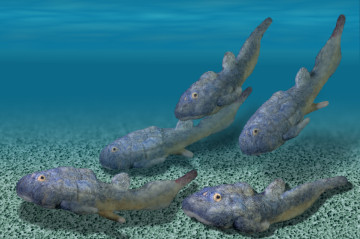
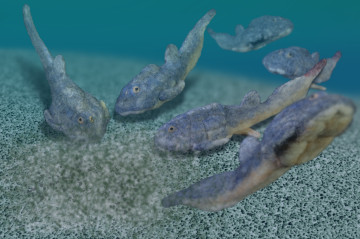

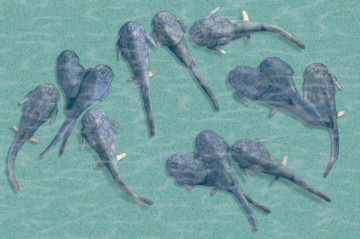
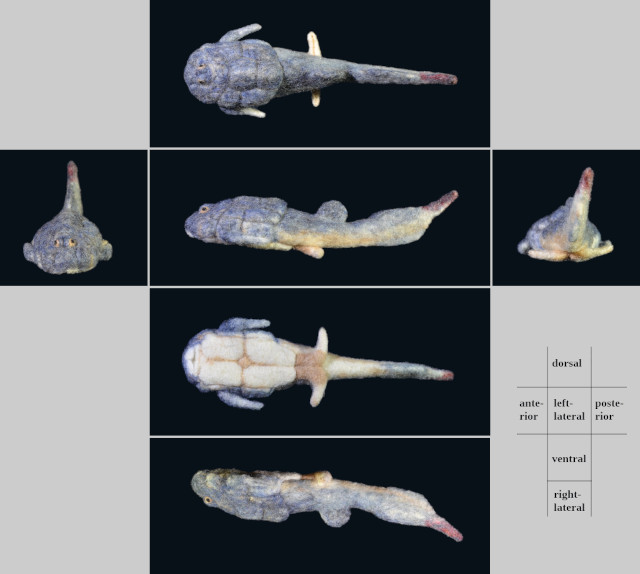
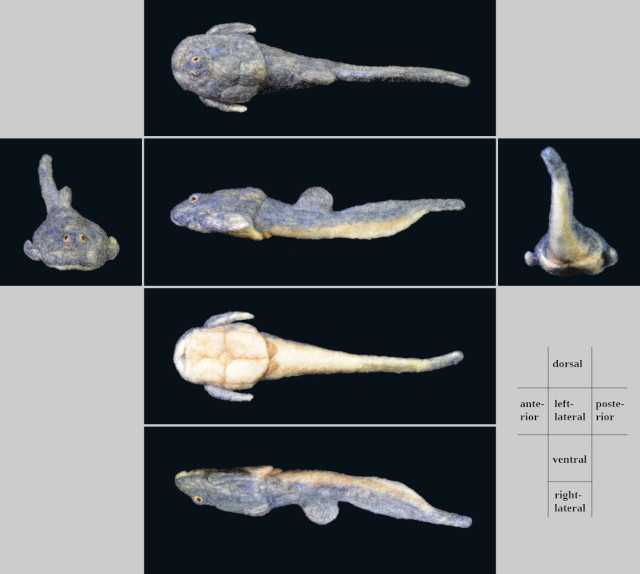
The posterior half of this model was created by referring to a material on Bothriolepis (Béchard et al., 2014).